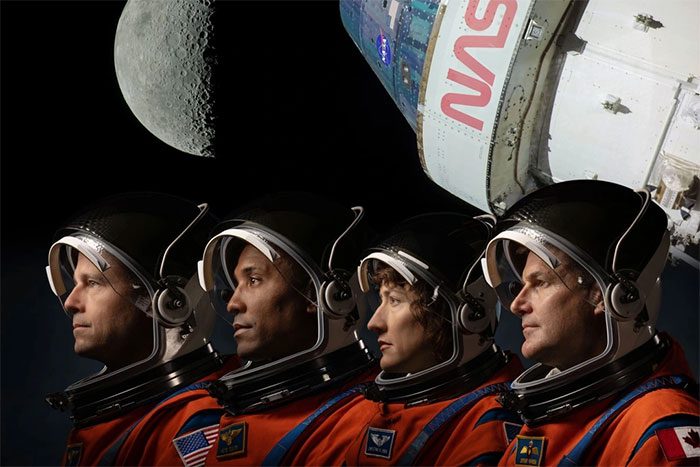NASA to Delay Lunar Mission Timelines Amid Increasing Technical Challenges.
According to Reuters, the Artemis program—NASA’s multi-billion dollar mission aimed at returning humans to the Moon—will likely face delays due to a series of different issues.

NASA astronauts in the Artemis 2 mission, which aims to return humans to the Moon. (Photo: NASA).
Details on the reasons for the mission delays have not yet been disclosed. However, credible sources reveal that one of the main issues is related to the Orion spacecraft, which seems to have encountered battery problems during vibration testing. These batteries are manufactured by Lockheed Martin.
Previously, NASA had planned to launch the Artemis 2 mission in November. This mission includes sending a crew of four to the Moon and returning to Earth after 10 days, marking the first crewed flight to the Moon since the historic Apollo missions.
However, it now appears that NASA’s most anticipated mission for 2024 will likely exceed its original timeline and be postponed until 2025.
Furthermore, Artemis 3—the mission intended to land humans on the Moon by the end of 2025 using the Starship landing system from NASA contractor SpaceX—will also be delayed.

The last crewed mission to the Moon was Apollo 17, which concluded in 1972. (Photo: NASA).
Reuters reports that Elon Musk’s SpaceX may take longer than anticipated to reach certain development milestones to ensure safety and feasibility for the mission.
NASA is expected to announce a specific plan soon after months of monitoring progress with contractors and considering changes to the Artemis program.
Unlike previous independent missions, NASA’s Artemis program heavily relies on private companies. Specifically, the mission will utilize the Space Launch System developed in collaboration by Boeing and Northrop Grumman to transport the crew from Earth.
Meanwhile, the Orion capsule, designed by Lockheed Martin, will house the crew and manage all operations. SpaceX’s Starship system will facilitate the landing and departure from the Moon’s surface.
Jeff Bezos’s Blue Origin is also developing a crewed lander for future Artemis missions.
While this collaboration allows NASA to diversify technologies and approaches for space missions, it also introduces challenges when any segment encounters issues. Synchronizing the entire system to ensure smooth and seamless operations will be a significant challenge.
NASA’s acknowledgment of potential risks and acceptance that some missions may not succeed underscores the complexity and uncertainty of space exploration, as Chris Culbert, Director of the CLPS program at Johnson Space Center, pointed out.
“The more missions you deploy, the more opportunities you have to succeed,” Culbert stated. “We are not sure that the initial test will be successful. But I can assure you that these American companies are technically rigorous. They are very knowledgeable about the business. They are resourceful and goal-oriented.”


















































